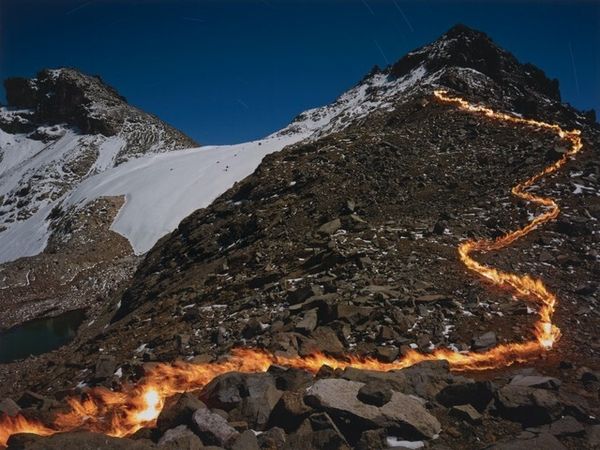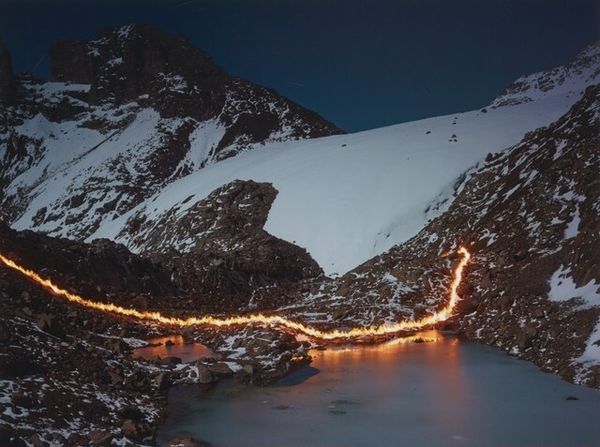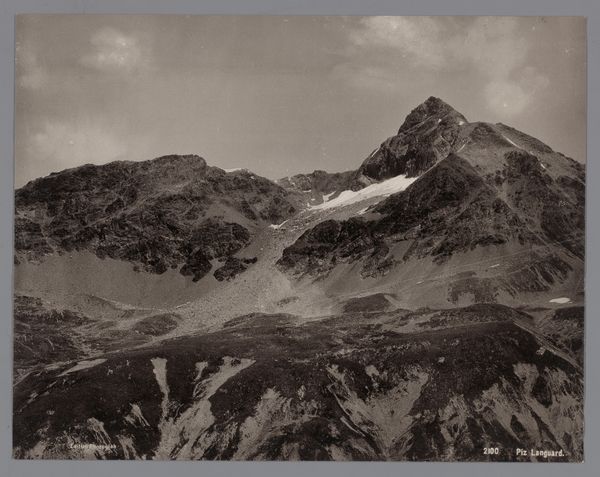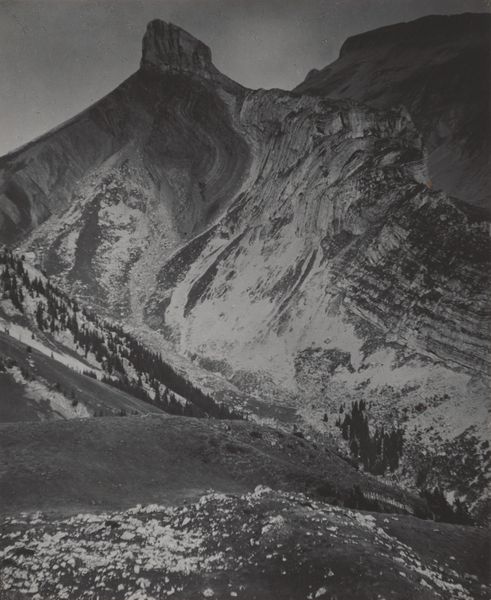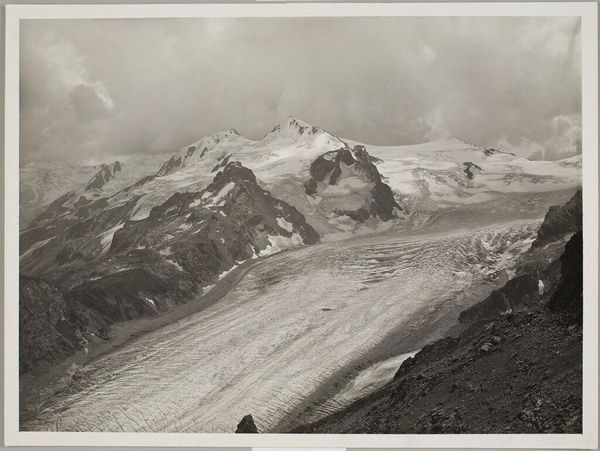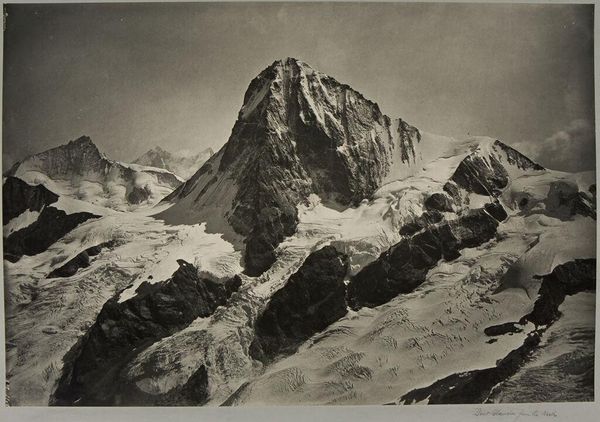
#
wildlife photography
#
drone photography
#
countryside
#
landscape
#
nature photography
#
nature
#
landscape photography
#
seascape
#
nature heavy
#
coastline landscape
Dimensions: image: 38.1 × 50.8 cm (15 × 20 in.) sheet: 48.26 × 60.96 cm (19 × 24 in.)
Copyright: National Gallery of Art: CC0 1.0
Curator: Simon Norfolk's "The Lewis Glacier, Mt. Kenya, 2004 (B)" offers a compelling visual of a landscape undergoing profound transformation. I'm immediately struck by its stark contrast. Editor: Yes, that dramatic juxtaposition between the cool blues and whites of the glacial landscape and that vivid streak of fiery orange—it’s almost apocalyptic. Is that natural? Curator: That striking band is the result of the artist's intervention; a line of kerosene that Norfolk ignites to illustrate, quite literally, the devastating impact of climate change on this disappearing glacier. Editor: It's a bold statement, using fire to depict environmental loss. The composition, divided starkly between the icy mountain and this almost hellish fissure, emphasizes the violence enacted upon the land. Beyond the formal shock, how does it sit within his broader body of work? Curator: Norfolk's work often explores themes of conflict and its lasting marks on landscapes. Here, climate change functions as a form of environmental warfare, leaving scars visible even from afar, especially within this photographic moment captured from a drone, or through the evidence in photographs produced later, between 2014 and 2015. Editor: Exactly! And it implicates us all in that conflict. The beauty of the scene, the majestic mountain against the deep blue sky… it’s seductive, almost obscuring the brutal reality. That's precisely why this use of disruptive imagery feels effective; a challenge for the viewer. It disrupts the typical romanticism of landscape photography, forcing us to confront our destructive capabilities. What semiotic reading do you find most profound? Curator: I keep returning to the idea of binary oppositions—the cool vs hot, glacial slowness vs combustive speed, dark rocks against ice. That's how the artificial burn visually represents environmental tragedy. The fire is more than just fire. It is about global warming; how we are making earth hell in many ways. It makes its point in powerful and unforgettable ways. Editor: Agreed. This photograph certainly stays with you. It reframes the landscape not as a static backdrop, but as an active participant bearing the consequences of our actions. It challenges the tradition, as you mention, while implicating viewers like myself in those traditions.
Comments
No comments
Be the first to comment and join the conversation on the ultimate creative platform.
